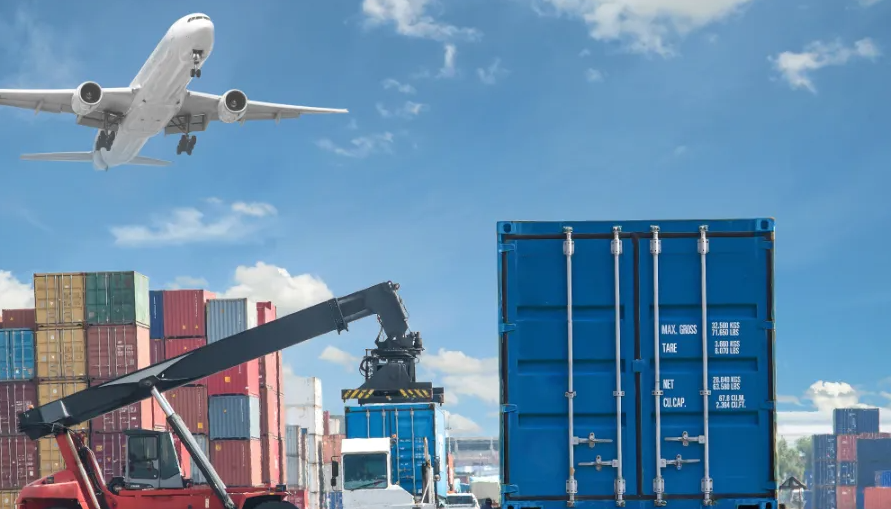All categories >
How does multimodal transport in international logistics work? (Knowledge sharing of international logistics dry goods)
Categories:
Time of issue:
2024-10-25 17:45
1. The concept and components of multimodal transport
Concept: Multimodal transport refers to the transport process that is completed by two or more means of transport that are connected to each other and transshipped together. It integrates the advantages of different modes of transportation, such as combining the large volume and low cost of shipping with the stability of railway transportation and the flexibility of road transportation to provide more efficient solutions for cross-border logistics.
The main components: including multimodal transport operators (MTOs), combinations of modes of transport (e. g. sea-land transport, sea-rail transport, etc.), full transport documents (e. g. multimodal bill of lading) and transport connection points (e. g. ports, rail freight stations, road freight hubs, etc.).

2. Operation process
The first stage: receiving goods and preliminary planning
The multimodal transport operator (MTO) first receives the customer's consignment request and signs a multimodal transport contract with the customer. The contract will specify the basic information of the goods (type, quantity, packaging, etc.), origin and destination, transportation time requirements, freight and payment methods. For example, if an electronics manufacturer wants to ship products from China to Europe and signs a contract with MTO to deliver them within 30 days, MTO will need to follow up on this requirement.
Determine the combination of transportation methods: MTO determines the appropriate combination of transportation methods based on factors such as the characteristics of the goods, transportation distance, transportation time and cost. If the goods are large quantities of electronic products, the time requirement is not particularly urgent, and the method of maritime rail transportation may be chosen, that is, from Chinese ports to European ports, and then to inland destinations by rail.
Arrange inland transportation (if required): At the place of origin of the goods, the MTO needs to arrange the transportation of the goods from the shipper's warehouse to the origin of the first mode of transportation. As in the above example, the MTO has to arrange for trucks to transport electronic products from the factory to the port terminal, a process that requires attention to the safety of cargo loading and unloading and the timing of transport to ensure that it can catch the scheduled sea flight.
The second stage: the first transportation
Production of loading and transport documents: Before the start of the first journey, such as the shipping link, the goods should be loaded onto the ship and the corresponding transport documents should be produced. The multimodal bill of lading is the most important document, it is the receipt of goods, the proof of the contract of carriage and the document of real rights. The bill of lading will indicate the details of the goods, the route of transport, the carrier of each transport segment, etc.
Transportation process tracking and coordination: In the first transportation process, the MTO shall track the transportation status. If it is shipping, through the ship tracking system to understand the ship's location, navigation speed and other information in real time, while maintaining communication with the shipping company to coordinate possible problems, such as navigation delays caused by bad weather.
Phase III: Transshipment Connection
Transshipment preparation: when the first journey is close to the transshipment point, the MTO shall prepare for transshipment in advance. This includes notifying the carrier of the next shipment to be ready to pick up the goods and arranging the loading and unloading equipment and personnel of the goods at the transshipment point. For example, at a sea-to-rail port, cranes are arranged to unload the goods from the ship and transfer them to rail wagons.
Handover of goods and document flow: At the point of transshipment, the carrier of the last carriage and the carrier of the next carriage hand over the goods. During the handover process, carefully check the quantity, status and other information of the goods to ensure consistency with the documents. At the same time, the transport document will be circulated accordingly, and the next carrier will sign the document to confirm receipt of the goods to clarify liability.
Stage 4: Subsequent Transportation and Final Delivery
Follow-up transportation tracking: After the transshipment is completed, follow-up transportation (such as railway transportation) is carried out as planned. MTO also tracks the transportation process to ensure that the goods arrive at the station near the destination on time and safely.
Local distribution arrangement: After the goods arrive at the destination station, the MTO arranges local distribution to deliver the goods to the warehouse or designated place of the final consignee. This process may involve partnering with a local logistics business or leveraging your own distribution network. When delivering the goods, check the goods information with the consignee and confirm the receipt, thus completing the entire multimodal transport process.










